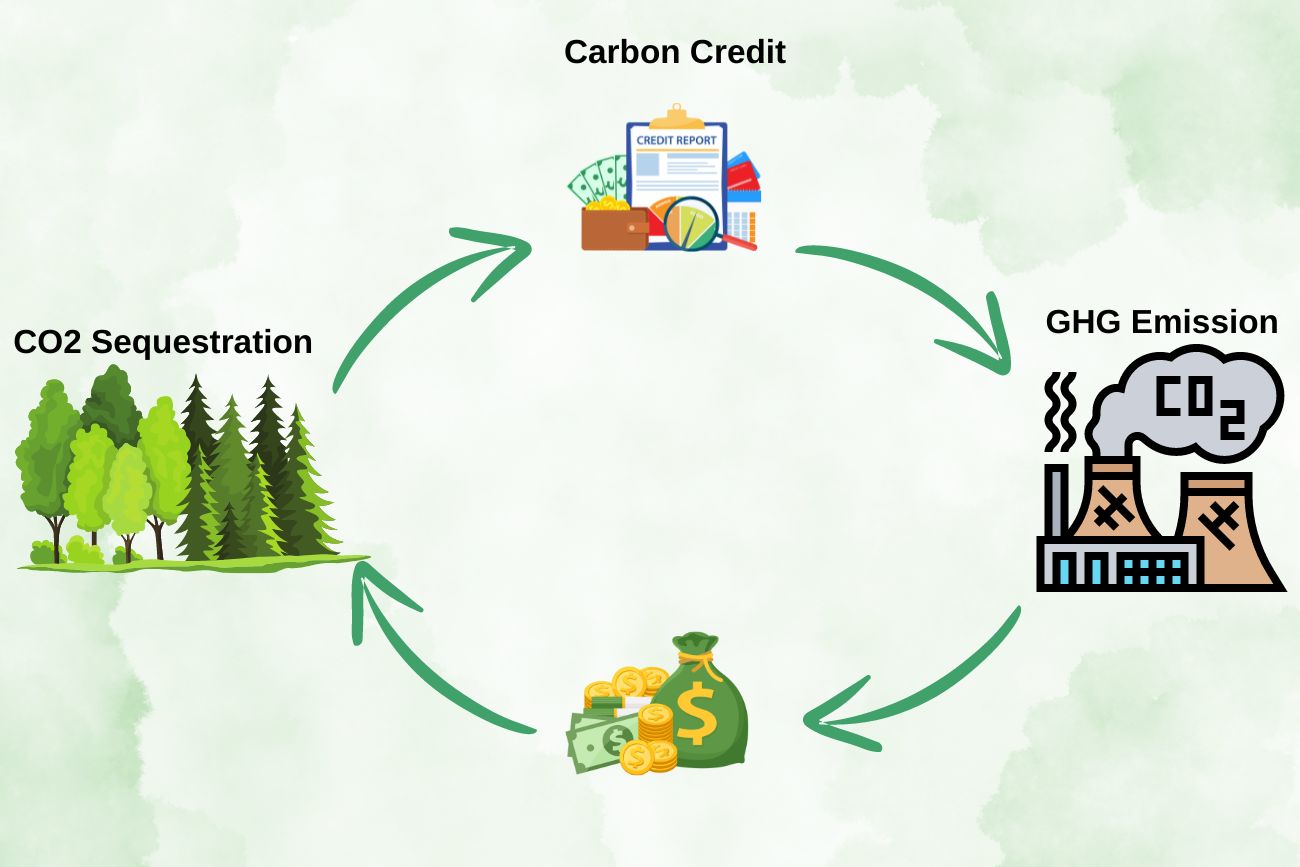
In the face of escalating climate change challenges, carbon credit trading platforms have emerged as a crucial mechanism for reducing global carbon emissions. Moreover, these platforms provide a market-based approach to incentivize businesses and governments to cut their carbon footprint. In this article, we will delve into the potential of carbon credit trading platforms and outlines a roadmap for their effective exploitation.
What is Carbon Credit Trading?
Carbon credit trading is a system where companies or nations that exceed their carbon emission limits can buy credits from those who have emitted less. Each carbon credit represents one ton of CO2 that has been reduced or sequestered. The trading platform acts as a marketplace where these credits are bought and sold, creating a financial incentive for emission reduction.

The Potential of Carbon Credit Trading Platforms
1. Global Emission Reduction
Carbon credit trading platforms play a significant role in reducing global emissions by making it financially attractive for companies to invest in greener technologies. Not only that, these platforms can potentially drive large-scale adoption of renewable energy, energy efficiency measures, and other carbon-reducing initiatives.
2. Economic Benefits
The carbon credit market is rapidly growing, offering substantial economic opportunities. For example, companies that reduce emissions beyond their required levels can sell their excess credits, creating a new revenue stream. This market also attracts investors looking for sustainable and impactful investments.
3. Innovation and Technological Advancement
The demand for carbon credits is driving innovation in carbon capture, utilization, and storage (CCUS) technologies. Companies are investing in cutting-edge solutions to reduce their carbon footprint, which not only helps in earning credits but also pushes the boundaries of what’s possible in emission reduction.
4. Corporate Social Responsibility (CSR)
Participation in carbon credit trading allows companies to demonstrate their commitment to sustainability. Consequently, this enhances their brand image and aligns with the growing consumer demand for environmentally responsible businesses.
Roadmap for Exploitation of Carbon Credit Trading Platforms
1. Regulatory Framework and Standardization
A well-defined regulatory framework is essential for the success of carbon credit trading platforms. So governments need to establish clear guidelines and standardize the measurement, reporting, and verification (MRV) of carbon credits to ensure transparency and trust in the market.
2. Technological Integration
The integration of blockchain technology can enhance the transparency, security, and efficiency of carbon credit trading. Blockchain ensures that all transactions are immutable and traceable, reducing the risk of fraud and double-counting of credits.
3. Market Expansion and Accessibility
Expanding the carbon credit market to include more sectors and regions can increase participation and liquidity. That’s why platforms should aim to make carbon credits accessible to small and medium-sized enterprises (SMEs) and individuals, not just large corporations.
4. Public-Private Partnerships
Collaboration between governments, private sector players, and international organizations is vital. In addition, public-private partnerships can help in the development of infrastructure, awareness programs, and financing models that support the growth of carbon credit trading platforms.
5. Education and Awareness
Raising awareness about the benefits and mechanisms of carbon credit trading is crucial. As a result, educational campaigns targeting businesses, investors, and the general public can drive participation and foster a culture of sustainability.
6. Monitoring and Evaluation
Continuous monitoring and evaluation of carbon credit trading platforms are necessary to assess their effectiveness. Regular audits and updates to the regulatory framework can address any challenges and improve the system over time.
Conclusion
Carbon credit trading platforms offer immense potential for driving global emission reductions, fostering innovation, and generating economic benefits. However, realizing this potential requires a strategic roadmap that includes robust regulations, technological advancements, market expansion, and collaborative efforts. By effectively exploiting these platforms, we can take significant strides toward a more sustainable and carbon-neutral future.
See more: What is Carbon Offset? How It Works and Its Benefits


